They came from far and wide; strawberry growers who wanted to know the ins and outs of the applicability of UV-C light in mildew control.
In Achtmaal at Mark Roovers' company, they were warmly welcomed by Henny van Gurp, network coordinator for soft fruit at Glastuinbouw Nederland.
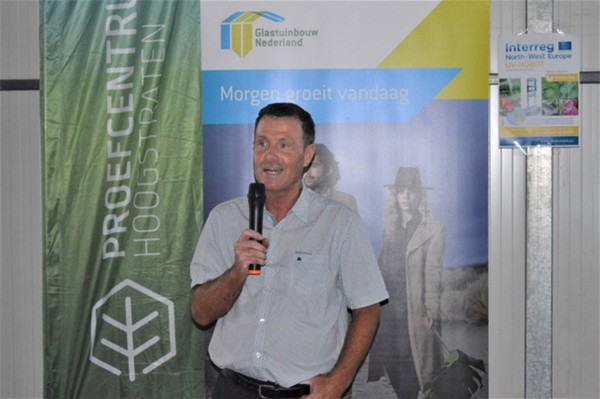
Stef Laurijssen of Proefcentrum Hoogstraten updated everyone on the results of their research. The reason for this research was clear. In summer and autumn, mildew (and, as the Flemish say, 'white disease') is a serious problem in strawberries. And in these times of fewer and fewer resources available, another solution is highly desirable.
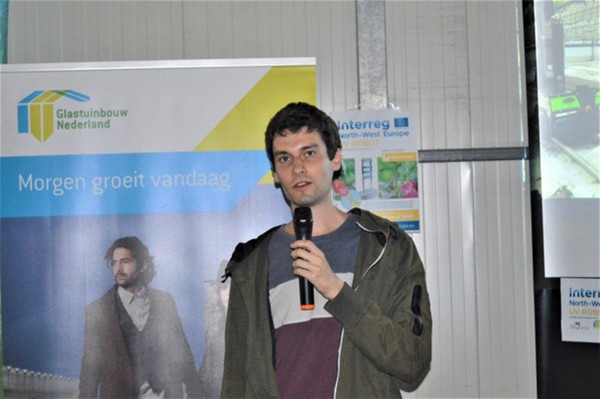
Stef: "We soon found out that UV-C has a curative effect on mildew."
So he explains why treatment with UV-C light must be carried out at night. Firstly, because it is harmful to humans, and secondly because this control is much more efficient.
What exactly is it? A fungus (such as mildew) can recover quickly if blue light is present. And during the day, there is blue light. At night, there isn't. Proefstation Hoogstraten has tested what the best time period for UV-C treatment. It turns out that night treatment can be started 1 hour before sunset and can continue until 3 hours before sunrise.
The additional advantage is that no one is in the greenhouse. Control can be carried out undisturbed, and the light, which is harmful to humans, does not affect them.
At high disease pressure, a treatment of 2 to 3 is sufficient to achieve good results. Lower doses of light already provide sufficient protection against mildew. Indeed ... Do not use too much UV-C to avoid plant damage.
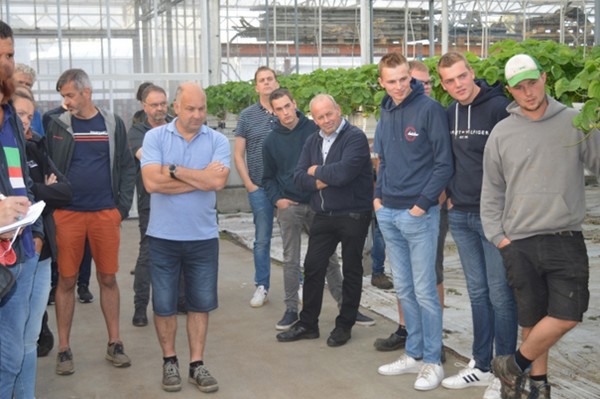
All eyes were on the demonstration of the UV-C Octiva solution
Side effects
The population of the released predatory mites is sufficiently maintained to continue doing their job. On the other hand, spider mites get the better of them: 60% of them die under UV-C light.
All in all, reason enough for Proefstation Hoogstraten to buy four UV-C devices. Four progressive growers, such as Roovers in Achtmaal, were approached to use them and asked to share their findings.
Initially, it proved no easy task; all growing locations have a different cultivation system or tube rail size or no tube rail at all. After that practical hurdle was cleared, the research could continue with these growers. And with success. Stef: "UV-C light turns out to be a reliable fighter of mildew."
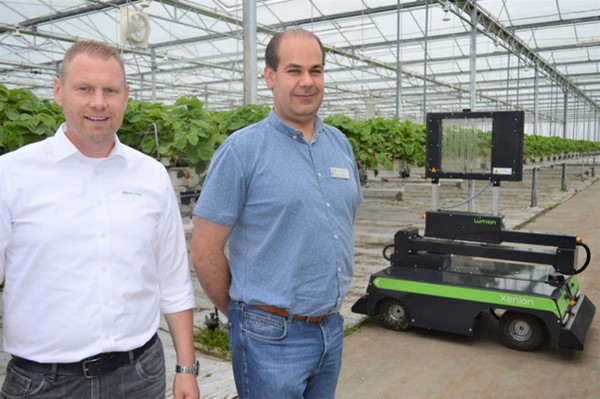
Peter Könemann and Thomas Hoeterickx of Octiva
Automated
Next, Thomas Hoeterickx of Octiva was given the floor. Octiva provides robotic labor automation solutions. They offer autonomous applications such as UV-C crop protection. But also for scouting, autonomous spraying, and nutritional spreading. All these applications fit on the same platform: Xenion. Xenion operates fully autonomously and can be mounted on tube rails between 42 and 114 cm as well as on tyres (if there is no tube rail).
They have christened the superstructure for UV-C, Lumion. It can be set up with a smartphone. And without human intervention, it does what it is supposed to do: Spreading UV-C light into the crop.
Currently, the UV-C light recipe has been developed for strawberry, tomato, and cucumber cultivation. Thomas: "We see our application as a partner in 'crop protection land.' In some countries around us, growers are really completely at a loss as there is no longer a solution against powdery mildew at all."
One of them is Gordon Yakel. He is a grower at Canada's Delta View Farms. He shared the following with us:
"We use the Lumion UV-C robot in our strawberry greenhouses to effectively prevent powdery mildew. We use the robot at night and pass each row 2-3 times every week. We have been doing this since the start of cultivation in January 2022. The Lumion UV-C robot has prevented powdery mildew in our greenhouse, which was our biggest problem in the two years before we had this machine in our ever-bearing strawberry variety. We have not seen any negative effects on our biological control program. Since we don't have to spray chemical pesticides to control powdery mildew, our beneficial insects are doing very well."
For more information:
Octiva 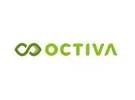
support@octiva.com
www.octiva.tech
